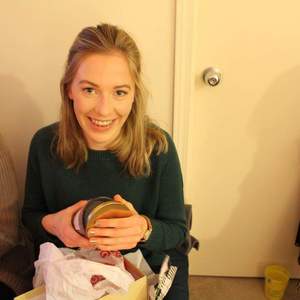I like to consider myself quite the coffee connoisseur. I regularly shun Starbucks in favor of a cup of local, specialty brew. I never contaminate my coffee with sugar or milk, and I internally shudder when offered bottomless coffee (thankfully, not a thing I grew up with in Ireland).
I thought I was at the pinnacle of my coffee game. Give me a hipster with a beard and a flat cap any day, and I would blow their socks off (though they probably aren’t wearing any). How wrong I was.
A bit like a cataract, in which you do not realize how poor your eyesight is until the hindrance is removed, coffee cupping hammered home the difference between a coffee snob (me) and
truly understanding great coffee.
Where was my cataract removed, so to speak? At Uel Zing Coffee Lab, in Bloomington, for $5!

If you are a victim of the Venti Iced Skinny Hazelnut Macchiato, sugar-free syrup, extra shot, light ice, no whip, please keep reading.
What is Cupping?
Cupping is the industry standard method that is used to evaluate coffee without the influence of a coffee machine or cafetière. Coffee is brewed in a cup and slurped from a spoon, like soup. At a cupping, you taste and learn about great coffee, from the sourcing and processing to roasting and brewing — in other words, the “Third Wave” approach.
“Third Wave” Coffee Culture

Yes, you missed the last two waves, so let’s ride the third together.
“The third wave of coffee is a movement to … consider coffee as an artisanal foodstuff, like wine, rather than a commodity. This involves improvements at all stages of production, from improving coffee plant growing, harvesting, and processing, to stronger relationships between coffee growers, traders, and roasters, to higher quality and fresh roasting.”
Break the Crust & Slurp
The cupping process involves several stages, which include grinding the coffee beans, agitating the granules with water, and letting the coffee sit for a few minutes.
The best part involves anchoring your snout over the surface of the coffee and slowly, with a spoon, breaking the crust that has formed. Inhale the aromas as if it is your last breath on this earth.
And then there’s the slurp, a truly a bizarre sight to behold. You are actively encouraged to make loud slurping noises in order to introduce more oxygen into your mouth, which improves the flavor of the bean (highlight of the class).
Respect the Bean

One of the main lessons to take away from a cupping class is a better appreciation for the flavor of each bean. As Sam, the owner of Uel Zing Coffee, explains, Starbucks has defined “This is what coffee tastes like.” According to Sam, most people who drink coffee think “it tastes like burnt rubber, but it can taste like so much more than that.”
Coffee is a Fruit
Attention college students: you are getting one of your five servings of fruit per day by drinking coffee. Okay, this may not be quite accurate, but the coffee bean is the seed of the coffee cherry.
Are You Dry or Wet?
How your coffee beans were processed majorly affects the flavor in your cup. The dry method involves laying the coffee cherries out in the sun until they dry up, which is considered the “natural method.” The “Third Wave” is turning away from this method as many argue that the flavor of the bean is masked by the taste of the cherry.
With the wet method, water is used to extract the bean from the pulp of the cherry before being dried, leading the flavor of the bean itself to shine through. As the experts say, the taste is cleaner.
My Grandmother’s Basement
The coffee aromas should hit you like a smack in the face and are often difficult to describe. One person in my class described the flavor of the coffee as reminding them of their grandmother’s dank basement … Ew.
Bean There, Got the Coffee
A good cupping class should teach you about the particular flavors associated with each coffee-exporting country. It may seem obvious, but I would not advise letting your taste in music lead your choice of coffee. While I am partial to Shakira and “Hips Don’t Lie,” the Colombian beans were not partial to my taste buds.
It’s All About the Climb

Generally, the higher the altitude the coffee bean is grown at, the better the flavor of your coffee will be. Less oxygen in the air means the beans take longer to mature, and the flavor has longer to develop. Check your coffee bag for the altitude at which the coffee beans were grown.
Dark Coffee Doesn’t Mean Stronger Coffee
Caffeine is water soluble, so the longer coffee is roasted, the theory goes, the more caffeine evaporates off the bean.
Secondly, dark roasted coffee beans have expanded more than medium or light roasts, so if you measure your coffee by scoops (which most people do), you’re getting less bang for your buck. Your life is a lie.
For many, coffee is an energy stimulant, a way to get through an 8 am lecture. But good coffee can also be really enjoyable. Considering so many college students drink themselves into a caffeinated eye twitch (guilty), appreciation of the flavor and work behind your coffee cup does not seem to be too much to ask, and it only costs $5.


